War Stories II (14 page)
Authors: Oliver L. North

PRIVATE ANDREW MILLER, US ARMY
Camp O'Donnell POW Camp
Luzon, Philippines
June 1942
Camp O'Donnell POW Camp
Luzon, Philippines
June 1942
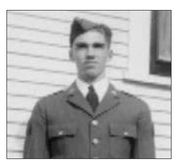
After the surrender of Corregidor they put us on ships and took us across Manila Bay to a town called Maclarin, right outside the base where I started the war, at Nichols Field.
Then they marched us the full length of Dewey Boulevard to Bilibid Prison, the equivalent of Atlanta or Leavenworth. They herded us all in there. After a couple of days they started to take us out, 1,500 at a time, put us on trains, and took us to a town where we would stay overnight. The first four groups of 1,500 ended up at Cabanatuan Three, and there were 6,000 men there.
The first four days of June 1942, the majority of the men from Camp O'Donnell were moved. That place was a mess. A lot of men died there.

PRIVATE JOHN COOK, US ARMY
Camp O'Donnell POW Camp
Luzon, Philippines
May 1942
Camp O'Donnell POW Camp
Luzon, Philippines
May 1942
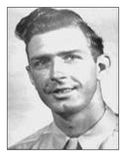
When we got to Camp O'Donnell there were around 200, 250 deaths a day. Filipinos and Americans were dying. They would put two bodies that were
so scrawny on one of the straight pole field stretchers, and they would carry it to the burial ground. They would dump them in the open pit.
so scrawny on one of the straight pole field stretchers, and they would carry it to the burial ground. They would dump them in the open pit.
When I got to Camp O'Donnell most of us had malaria and beriberi. I didn't know that we had diphtheria, dysentery, typhoid fever, and stuff like that. The sickest people had yellow jaundice, typhoid fever, or dysentery. They were so skinny it was pathetic and you thought they were about ready for their graves.
One morning I had mess duty and was stirring the
lugow
potâlike a rice potâwith this fellow Clark. We were working on the Zero Ward. Zero Ward meant that you were there because you were expected to die soon. At that time there were about twelve of these scrawny guys on Zero Ward. It was just getting daylight and the poor fellows were standing there with their beat-up mess kits waiting for rations. Then I said, “Clark, come here.” And I pointed to a rat in the cooking pot, in the
lugow
for breakfast. “Clark, we can't eat this stuff. What are we gonna do?”
lugow
potâlike a rice potâwith this fellow Clark. We were working on the Zero Ward. Zero Ward meant that you were there because you were expected to die soon. At that time there were about twelve of these scrawny guys on Zero Ward. It was just getting daylight and the poor fellows were standing there with their beat-up mess kits waiting for rations. Then I said, “Clark, come here.” And I pointed to a rat in the cooking pot, in the
lugow
for breakfast. “Clark, we can't eat this stuff. What are we gonna do?”
Clark said, “I'm gonna go back behind the stove and push down the window. And you just flip it out there and they'll never see it.”
I flipped that darn rat out there and there were ten or twelve guys who saw it and soon there wasn't one scrap of that rat. They ate it, bones and all.
 PHILIPPINE ISLANDS
PHILIPPINE ISLANDSAUGUST 1942
Within weeks of the fall of Corregidor, Filipino civiliansâmany with relatives inside the complex of Japanese POW campsâbegan to get word to the outside world about what had happened on the Death March and about conditions inside the camps. U.S. and Filipino guerrillas, operating in the jungle-covered volcanic mountains, passed information about the camps and the POWs to allied intelligence officers. And while conditions inside the camps remained deplorable, the Philippine underground was eventually able to smuggle small amounts of medicine and some supplies into the camps.
Claire Phillips was the American bride of Sergeant John Phillips, fighting with the 31st Infantry when Bataan surrendered. He was sent to Cabanatuan, where he died of malaria, dysentery, and malnutrition. Claire, alone and living in Japanese-occupied Manila, was determined to avenge her husband's death. She made contact with a Philippine resistance organization, which provided her with false Italian identity documents. Since Rome and Tokyo were allies, this would keep the Japanese from becoming suspicious of the attractive young American.
Claire, now known as “Dorothy Fuentes,” started a nightclub for Japanese officers.
She called it Club Tsubaki and opened its doors in October 1942. “Tsubaki” meant “camellia” in Japanese and also meant “hard to get.” The beautiful Filipino women who worked with “Dorothy” in Club Tsubaki were amazingly effective in eliciting information and military intelligence from the officers who frequented the club. The Japanese nicknamed Claire “High Pockets,” because she had a habit of hiding her tips in her bra. Unbeknownst to her generous customers, Claire used the money to buy quinine and other medicines that the Philippine resistance organizations smuggled into the POW camps. POW camps.
Â
Claire Phillips
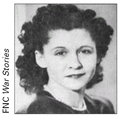
Â
Robert Taylor
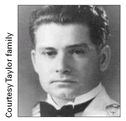
A key member of Claire's spy and smuggling web was a highly respected and devout Army chaplain, Major Robert Taylor. Ironically, it was the gift of a signed Bible from “High Pockets” to Chaplain Taylor that almost got them both killed.
Shortly before the United States liberated the Philippines, a prison guard conducting a routine search of the chaplain's belongings found the Bible. Within days, Japanese military intelligence arrested Claire. Though they tortured her and the chaplain, neither of them divulged what they knew of the other. Both survived the experience, and after the war, both the U.S. and Philippine governments recognized Claire for her heroism.
The courage of Claire Phillips, Chaplain Robert Taylor, and hundreds of othersâmostly Filipinosâhelped to ease the desperate plight faced by tens of thousands of prisoners seized in the most ignominious defeat ever suffered by the U.S. Armed Forces. Unfortunately, the good news of their bravery would remain unknown to all but a few Americans for several more years. And in the months after Pearl Harbor, good news was something the American people desperately needed.
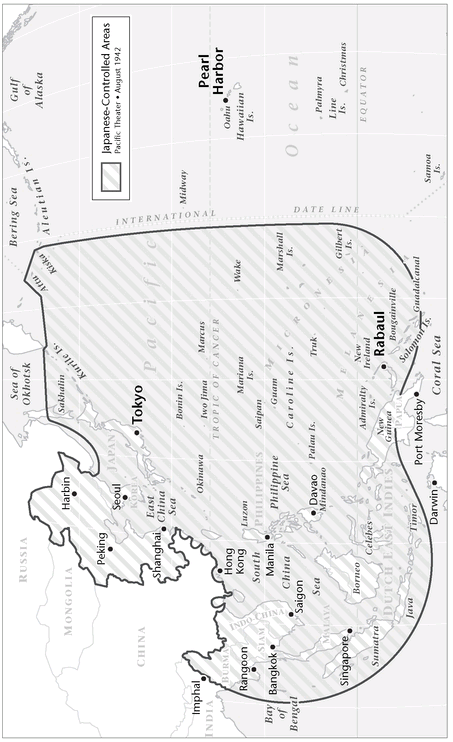
CHAPTER 4
REVENGE FOR PEARL HARBOR: THE DOOLITTLE RAID
(APRIL 1942)
S
tunned by the surrender on Bataan and the broad scale of Japanese attacks in the Pacific, many Americans saw the war they had sought to avoid as a succession of military disasters. Pearl Harbor had awakened the “sleeping giant,” but since December 1941 it had seemed as though there was little that the giant could do to stop the onslaught.
tunned by the surrender on Bataan and the broad scale of Japanese attacks in the Pacific, many Americans saw the war they had sought to avoid as a succession of military disasters. Pearl Harbor had awakened the “sleeping giant,” but since December 1941 it had seemed as though there was little that the giant could do to stop the onslaught.
On 1 January 1942, representatives of twenty-six countries, calling themselves the United Nations, signed the Atlantic Charter, drafted by Roosevelt and Churchill. In it, the signatories pledged to “wage total war” against the German-Japanese-Italian Axis. But the document had little immediate effect on the global battlefield. The headlines in U.S. newspapers continued to carry a steady stream of bad news from around the world.
In the Pacific, it certainly appeared as though the Japanese were invincible. Guamâthe first American territory to be seized by a foreign
powerâfell only hours after the attack on Pearl Harbor. The tiny garrison of Marines and sailors on Wake Island had fought back valiantly against overwhelming odds but had finally succumbed on 23 December. Forty-eight hours later, on Christmas Day, the British surrendered Hong Kong, the crown jewel of their Far Eastern colonies.
powerâfell only hours after the attack on Pearl Harbor. The tiny garrison of Marines and sailors on Wake Island had fought back valiantly against overwhelming odds but had finally succumbed on 23 December. Forty-eight hours later, on Christmas Day, the British surrendered Hong Kong, the crown jewel of their Far Eastern colonies.
The Japanese didn't take time off to celebrate the new year or their victories. As they reinforced General Homma's effort to crush opposition in the Philippines, they moved simultaneously to seize French Indochina, Thailand, Malaya, and the oil-rich Dutch East Indies, and moved against the British in Burma. By 15 February, when Singapore fellâjust over two months after Pearl Harborâthe Japanese had killed or captured more than 150,000 British, Australian, Dutch, and Indian troops. Four days after the fall of Singapore, Japanese carrier-based aircraft bombed Darwin, Australia, sinking thirteen Allied ships and razing the port.
Other books
Tainted Love: Sinful Souls MC #3 by Jones, Amo
Hounds of Autumn by Blackwood, Heather
Lonestar Homecoming by Colleen Coble
Farm Girl by Karen Jones Gowen
The Serenade: The Prince and the Siren [Daughters of the Empire 2] (BookStrand Publishing Romance) by Hollingsworth, Suzette
Ramage & the Guillotine by Dudley Pope
Gettysburg by Trudeau, Noah Andre
Moonless by Crystal Collier
The Escape Artist by Diane Chamberlain
emma_hillman_hired by emma hillman
